ESPEJO
Salar de Uyuni: The world’s largest salt flat
DESIGN MANIFESTO
The purpose of the ESPEJO project is to define a cultural event held annually in Uyuni, Bolivia that focuses on bringing awareness to the mining in Salar de Uyuni, and a transformative change through art, culture, and both local and global community participation.
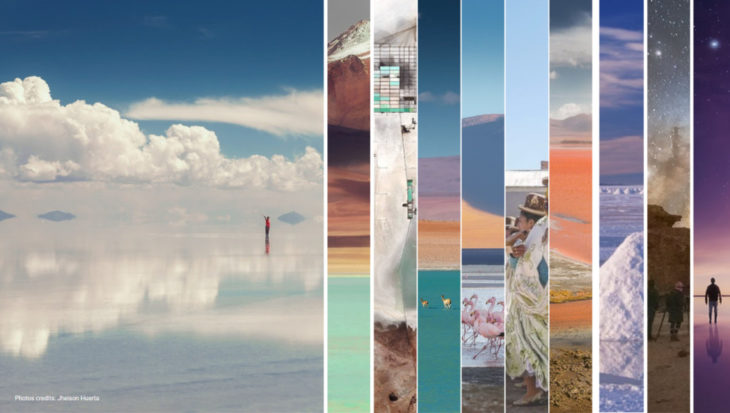
ESPEJO GOALS:
Economic growth of the Indigenous communities, Promoting local Culture, Art, and crafts, Raising awareness of Lithium mining, and Thriving Biodiversity.
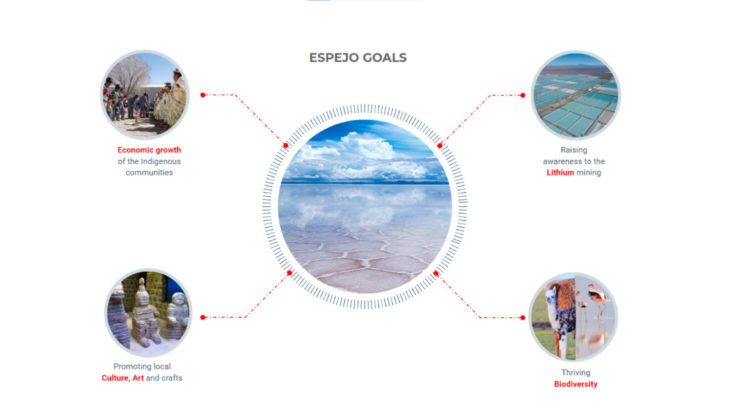
SITE ANALYSIS:
The site was evaluated in 4 layers of context to determine the exact location of the potential site.
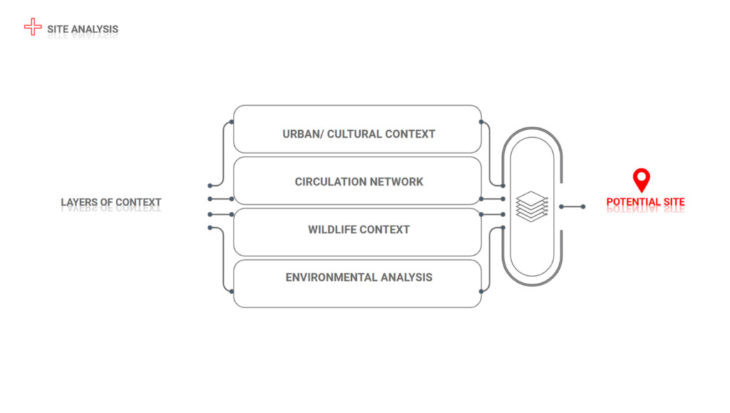
URBAN / CULTURAL CONTEXT
There are two indigenous communities that surround the site: Zone Aymara to the north and Zone Quechua to the south. These are both very poor communities that could benefit from promoting economic growth by leveraging their local culture and arts and craft. In the south, there is a salt museum and other cultural and recreational activities.
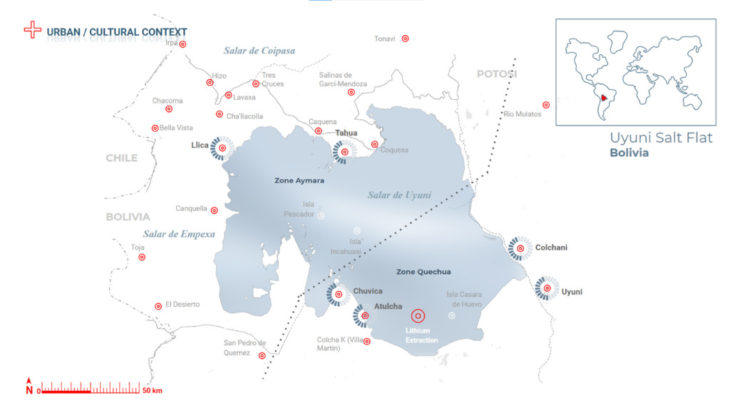
CIRCULATION NETWORK
Because of the high altitude and mountainous areas surrounding the site, access to the site is difficult. The satellite GPS traces indicate the current movement across the site and help us determine where accessibility is possible.

WILDLIFE CONTEXT
The biological and the natural environment in the area around Salar de Uyuni is quite special and diverse that can promote many activities in the area like birdwatching, volcano ascents, photography, rock climbing, and bouldering. In the north, there are flamingo flocks and llama cattle. Because our goal is to protect the wildlife, we will leave this area undisturbed.
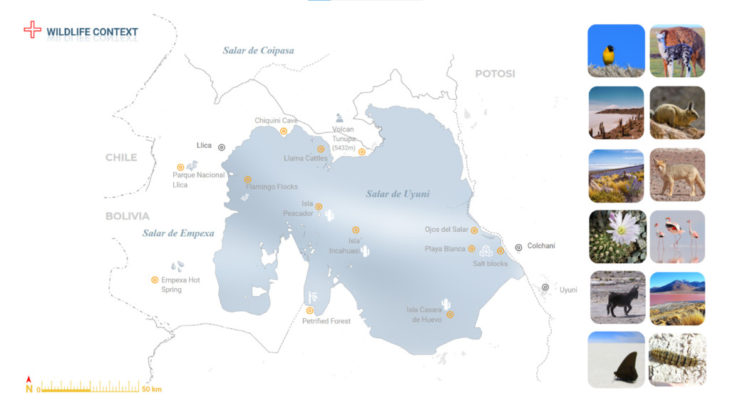
ENVIRONMENTAL ANALYSIS
In Uyuni, the summers are long, comfortable, and partly cloudy and the winters are short, very cold, snowy, and mostly clear. Over the course of the year, the temperature typically varies from -3°C to 21°C. The climate is classified as a cold desert climate and is relatively the same all year round.
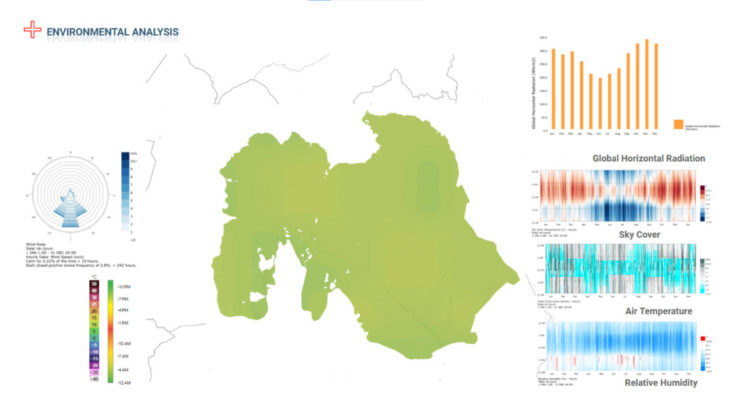
POTENTIAL SITE
Because of these 4 levels of context, we determine the site should be located in the south.
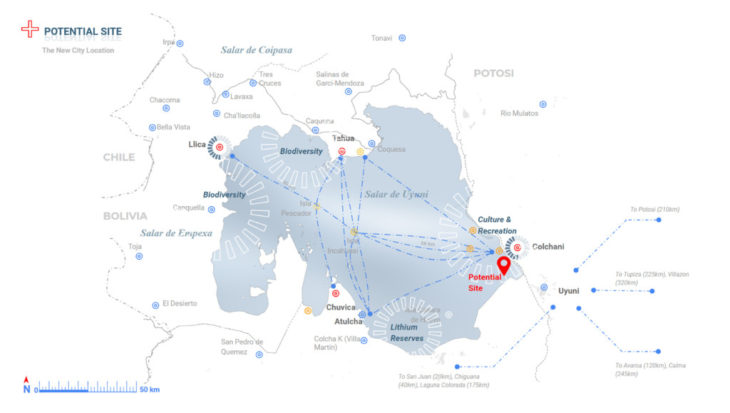
PRECEDENT:
Burning Man is an event focused on community, art, self-expression. It was considered as a close precedent to the Espejo project in terms of size, program, and location specialness.

THE NEW CITY LOCATION:
The new Potential site would be located 7km from Uyuni airport.
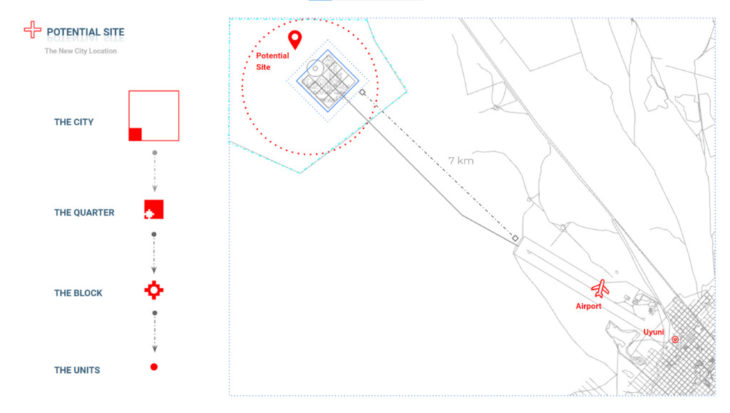
SOLIDIFICATION OF SALT
In order to use salt as the main raw material in the project, we explored different fabrication strategies with their case studies:
- Manual Pressing.
- 3D printing salt; panels supported by a frame structure or printed with catalyst or substances.
- 4D printing natural crystallization of salt. Define a structure that can evolve based on external conditions.
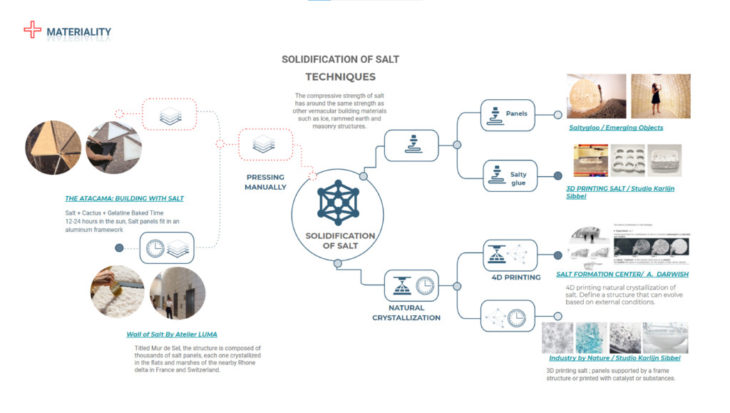
SYSTEM- NATURAL CRYSTALLISATION
Experiment: testing experiment for crystallization of salt on a rope in a saturated salt solution with/without methanol.
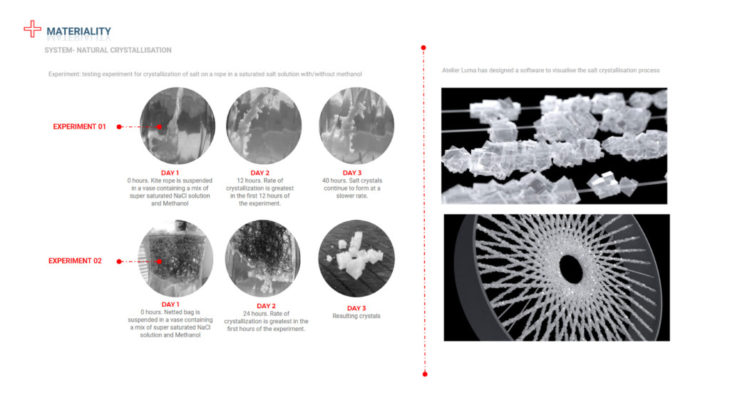
MATERIALITY – CONSTRUCTION TECHNIQUES: MASONRY
In the region, salt blocks were used as a natural building material for the floors, walls, ceilings, and furniture, as seen in the salt hotels built in the area.
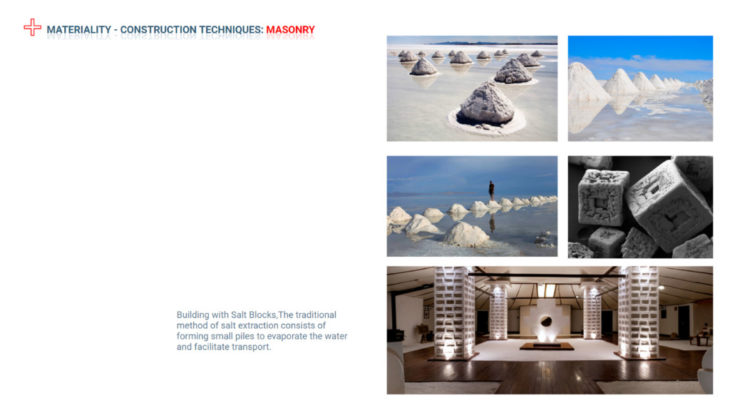
DESIGN CONCEPT & METHODOLOGY
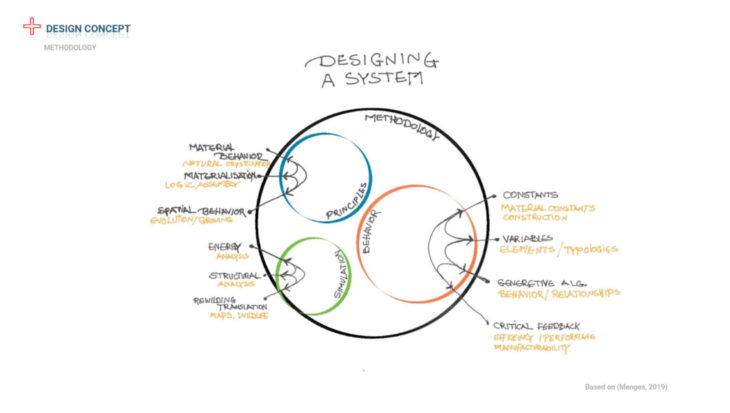
EARLY EXPLORATIONS
In our early explorations, we envisioned these circular, spherical structures to be in the center of the festivities.
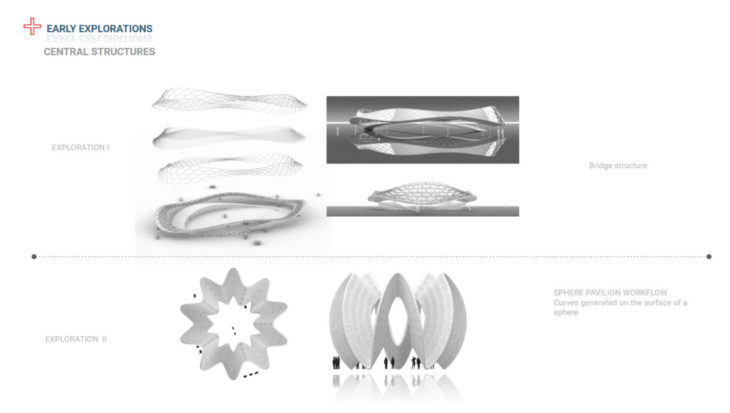
BEHAVIOR CONCEPT – CITY PROGRAM
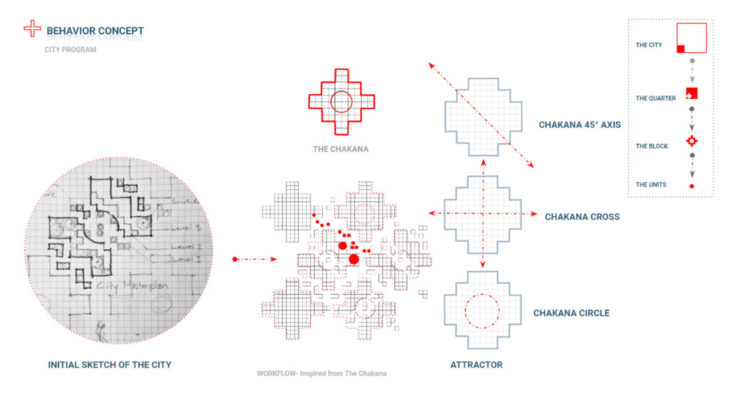
THE CITY MASTER PLAN & PROGRAM
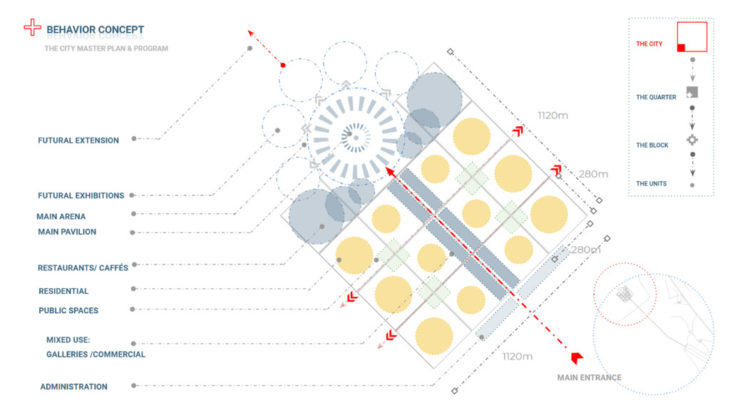
THE QUARTER PLAN
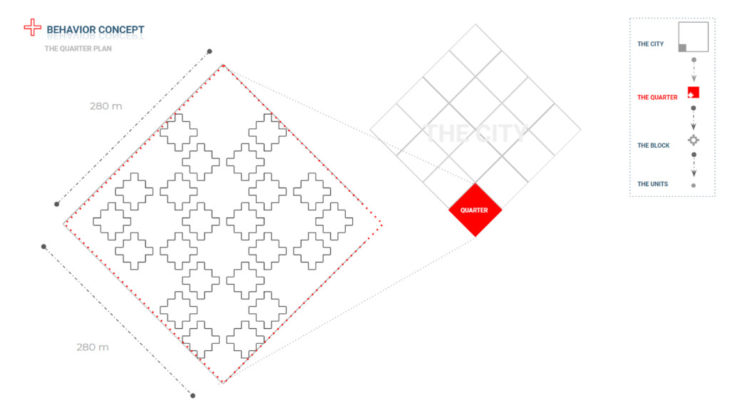
THE BLOCK PLAN
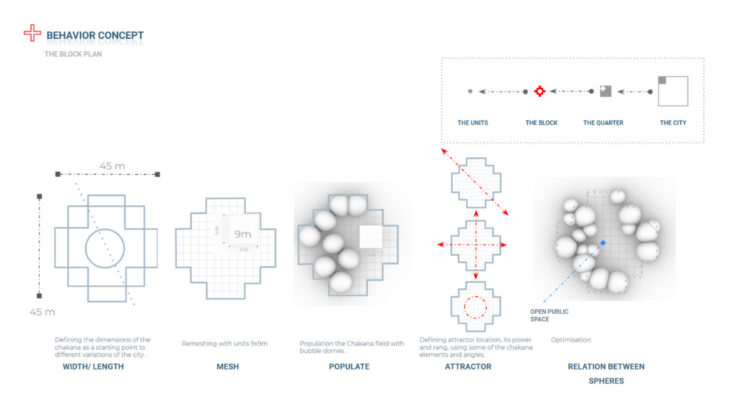
OPTIMISATION OF SPATIAL RELATIONSHIPS
Genes:
- Location of open space
- Height differentiation
- Quantity of spheres
Objectives:
- Minimize overlap of domes
- Minimize area
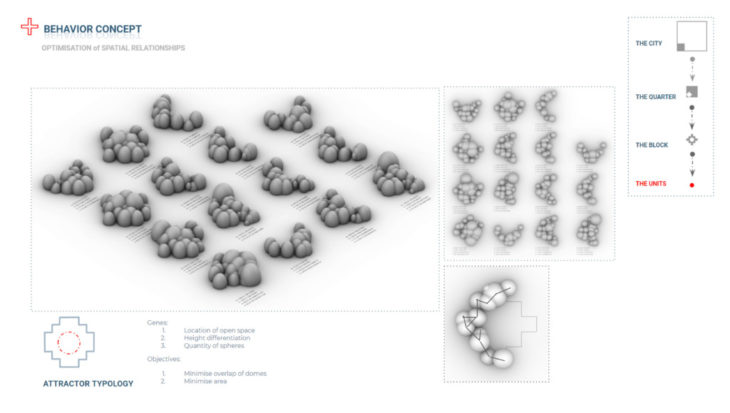
CITY GROWTH
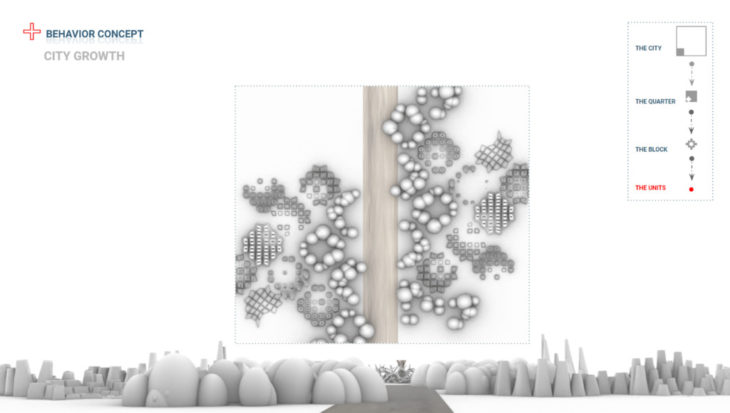
SALT STRUCTURES EXPLORATIONS
The Ayama & Quechua Patterns
An approximation of iconography of Aymara culture (Bolivia, Peru, and Chile), was created to transmit information and stories in the fabrics on the natives near the Salar and into many cultures in Bolivia.
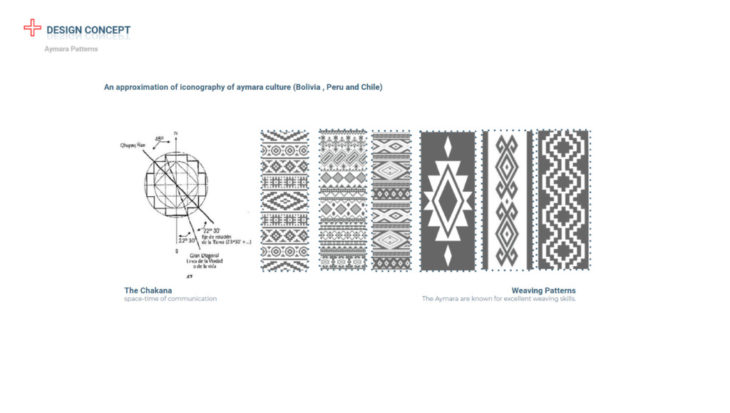
-
The Salt Tower
The place where the visitors can interact with the structure, inside and outside, The external structure is covered with the traditional fabrics.
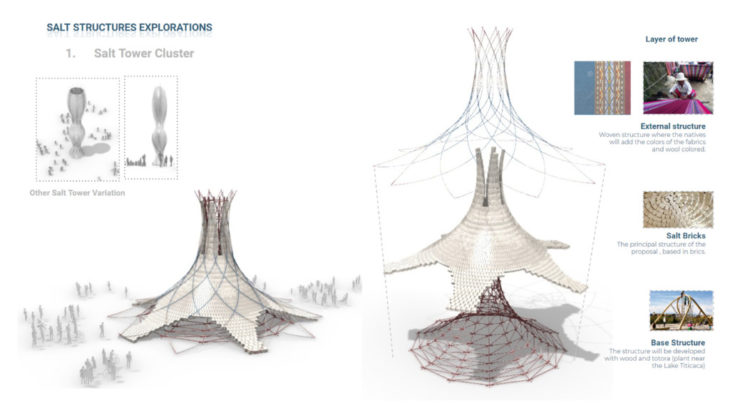
-
Salt domes //Gallery proposal
The functions: The size and all the iteration can be applied for too many uses, like sell areas, art spaces, relax areas, among others.

Joined domes
These will be places where all the visitors will find Art pieces like salt sculptures, Bazars, or presentations.
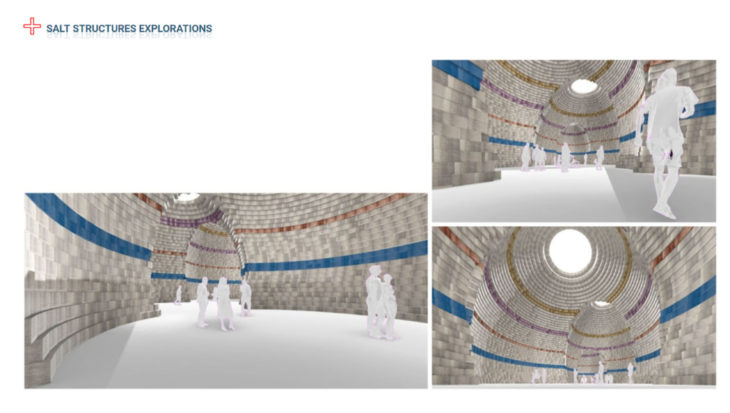
-
Minidome
The structure-based salt bricks present the variations obtained of the fabric pattern and this structure can be used for many different purposes and services.
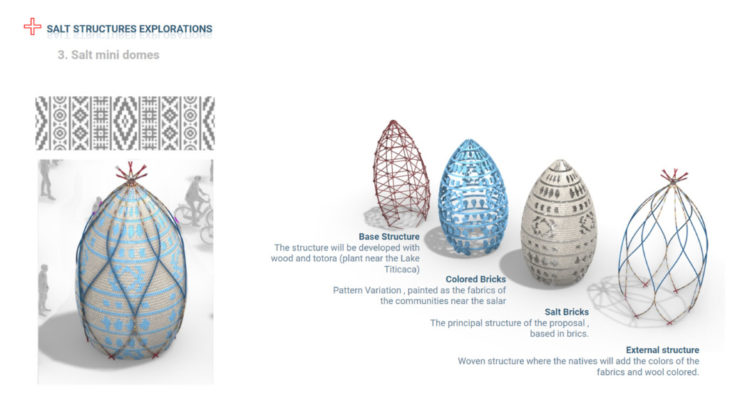
Time as a factor of future growth…
When all the happiness of a festival, a city, and all the move to a new city stops… the rain and all the hard environment will retrieve the salt over the soil …
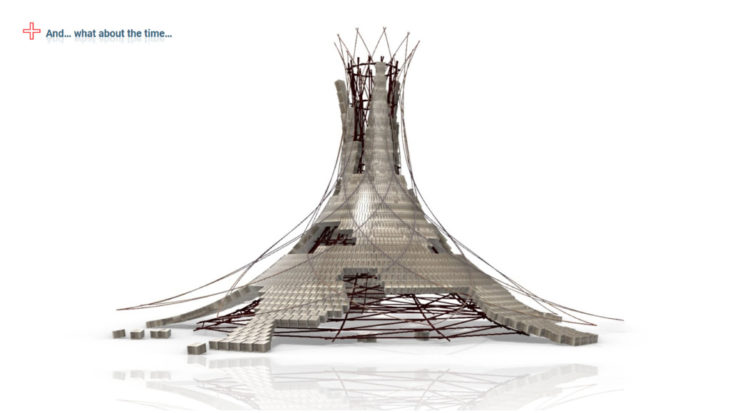
And the structures…
The future degradation of salt bricks will let us rethink our proposal for the next year, as a possibility to reuse the structure and the possibility to show more the fabric and all the art of the communities….
ESPEJO is a project of IAAC, Institute of Advanced Architecture of Catalonia developed at Master In Advanced Computation For Architecture & Design in 2021/2022 by students: Abed E. Badran, Amanda Gioia, Ara Keuroghlian, Jumana Hamdani, Rodrigo Alvarez, and Faculty: Arthur Mamou-Mani, Fun Yuen, Krishna Bhat